What Happens to Silk When You Dry It? Preserving Its Beauty
As a silk garment lover, I understand the importance of properly caring for these precious items to maintain their beauty and longevity.
That’s why I want to provide a complete guide on the dos and don’ts of drying silk. By following some simple best practices, you can keep your silk looking and feeling fabulous for years to come.
Read on to learn everything from what happens to silk when you dry it, common mistakes to avoid, and troubleshooting solutions if your silk does become damaged.
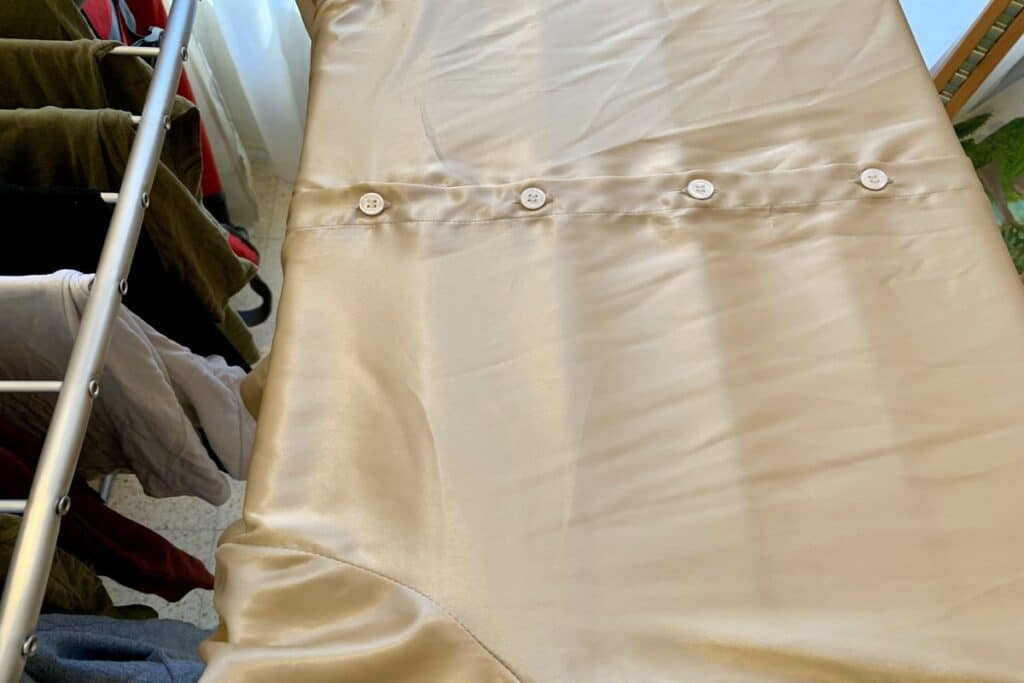
How Drying Affects Silk
When silk undergoes the drying process, the texture, strength, and appearance of the fabric can change if not handled properly. Here’s an overview of what to expect:
Shrinking
Silk is extremely prone to shrinking when air drying methods cause too much agitation or heat is too high. Always air dry flat to allow for gradual drying without damage.
Pre-stretching silk prior to washing can also help combat shrinkage by expanding the fibers.
The process of how to wash and dry silk without causing damage is something I’ve honed over time.
Loss of Sheen
The beautiful luminous sheen of silk comes from the neat, aligned structure of the fibers which reflect light.
Exposure to excess heat and friction against other fabrics in the dryer can break down this structure leading to a dull, lifeless texture.
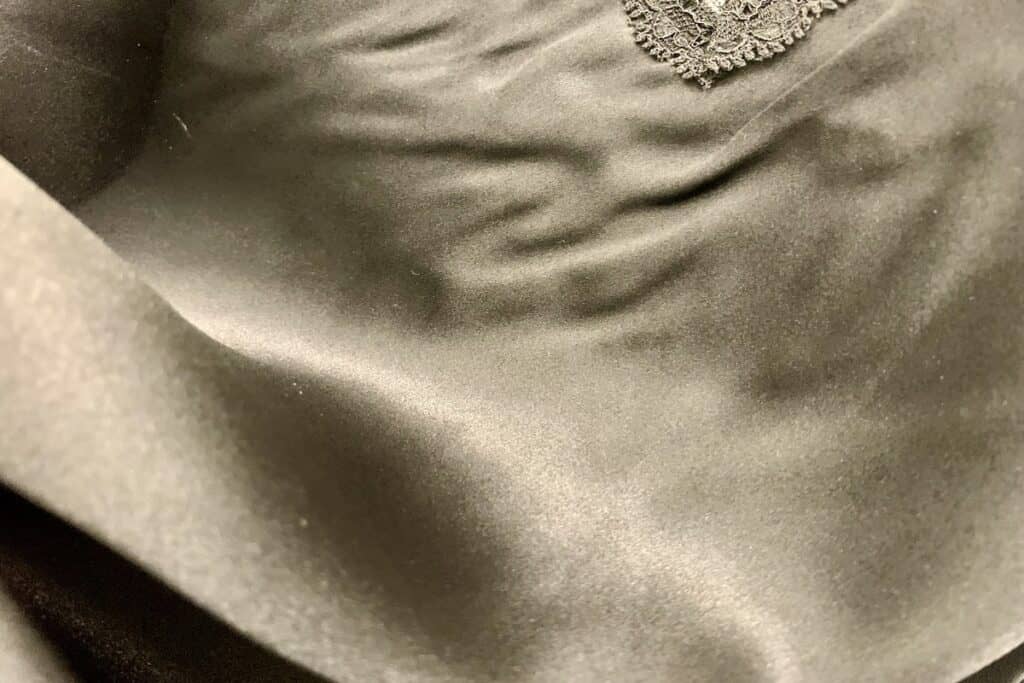
Color Fading
The dyes used to color silk can fade or bleed when exposed to sunlight or high heat during drying. Direct sun also catalyzes dye breakdown through UV damage.
Snarling
If left to hang freely, silk’s fine fibers can snarl and tangle during drying. This leads to texture damage and stretched-out areas.
Residual Odors
Improper drying that doesn’t allow full evaporation can leave behind musty smells from moisture retention.
Following the best practices outlined below will keep silk supple and lustrous by preventing shrinkage, maintaining vibrant colors, and retaining the fabric’s special reflective sheen.
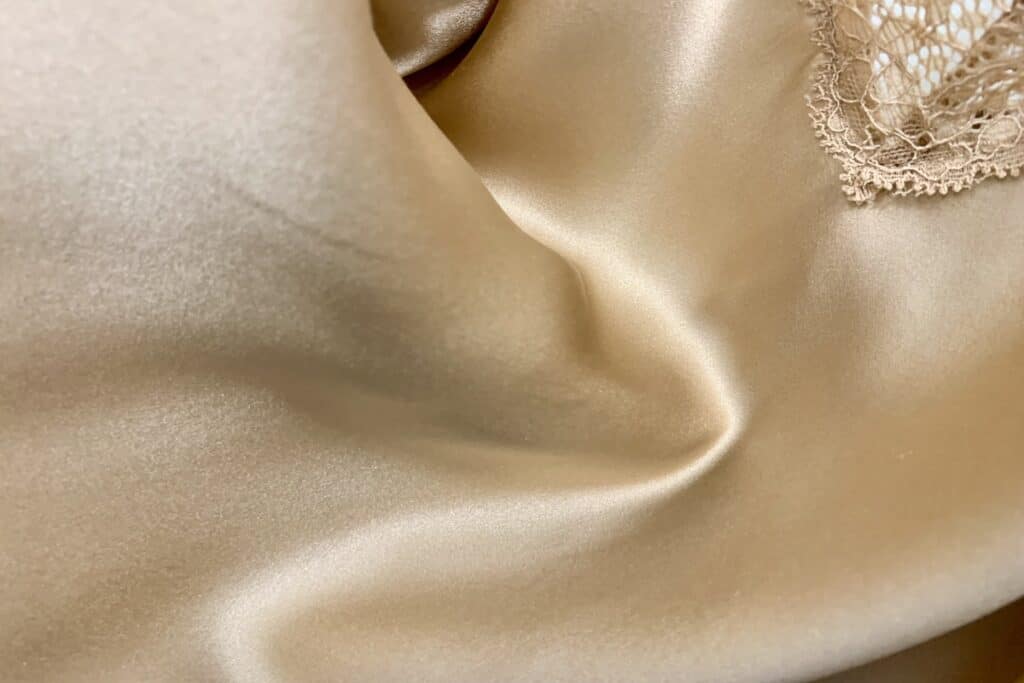
Common Mistakes in Drying Silk
It’s easy to accidentally damage delicate silk if you don’t know how to treat it during drying. Here are some common errors:
High Heat
Using high heat from dryers or irons is too harsh for silk. This can cause:
- Shrinking or warping
- Dull, damaged texture
- Loss of vibrancy in colors
The question of does silk actually shrink when dried led me to some interesting experiments.
Agitation in Dryer
The tumbling motion in dryers weakens silk fibers over time leading to:
- Pilling
- Snagging
- Thinning
Plus, the rubbing action can damage silk’s special reflective properties.
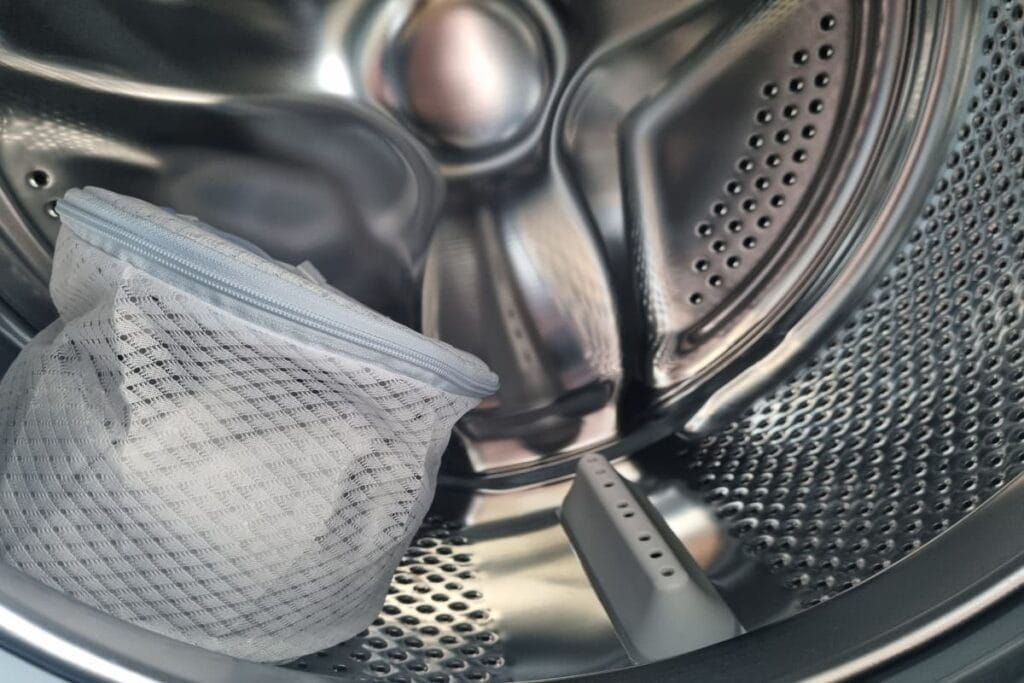
Direct Sunlight
While the warmth helps evaporate moisture, the direct sun also fades dyes.
Hanging Vertically
Letting silk garments or fabrics hang vertically from clips or hangers stretches out the fibers.
By avoiding these mistakes and handling silk gently, you’ll keep it looking its best.
Best Practices For Drying Silk
Below I’ll share the proper techniques I’ve used to dry my silk pieces for years safely and effectively:
Air Dry Flat
This is the single best way to dry silk without damage.
Steps to follow:
- Lay clean, wet silk item flat on top of a dry, colorfast towel.
- Reshape garment edges/seams lightly. Let fully air dry, away from direct light.
- Avoid wire hangers or tight clamps that imprint creases.
Drying flat keeps the integrity of the silk fibers intact.
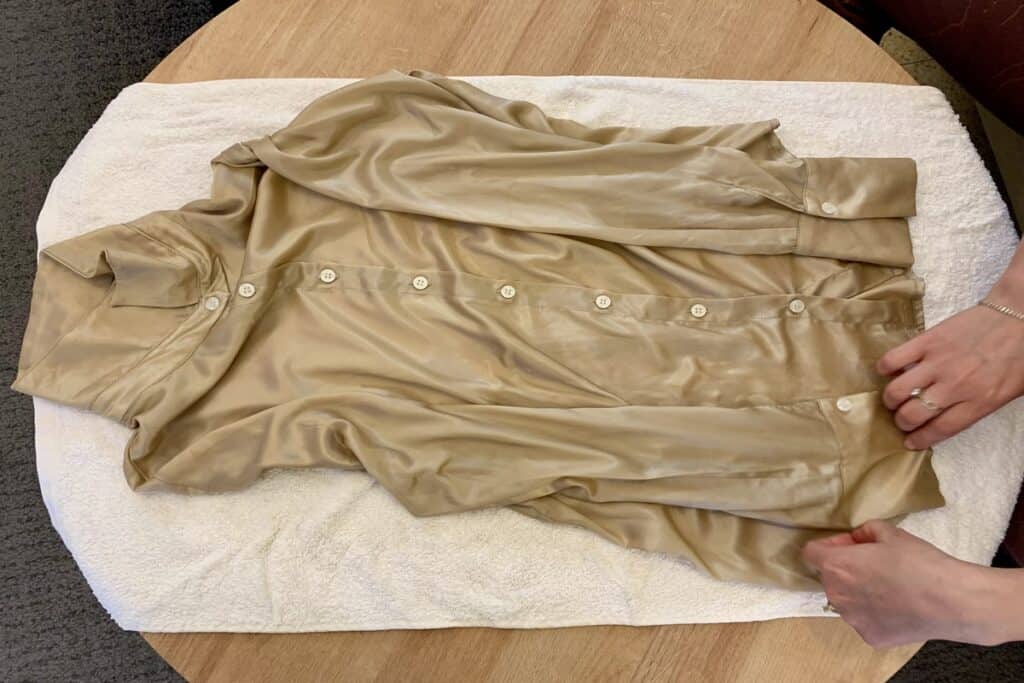
Use Low Heat If Needed
If air drying isn’t possible in your climate or season:
- Dryer: Use the air fluff, no heat setting. If heat is needed, use the lowest setting. Make sure to use a protective mesh bag.
- Iron: Choose a low temp (under 300°F) and place a protective cloth over the silk before ironing gently.
I personally air dry all my silk whether inside or outside to completely prevent heat damage.
Dry in Shade
If drying silk in sunlight:
- Keep out of direct sun which fades colors
- Shade beneath an awning or opaque cover
- Flip periodically as it dries
Filtered sunlight avoids harmful UV rays while letting moisture evaporate.
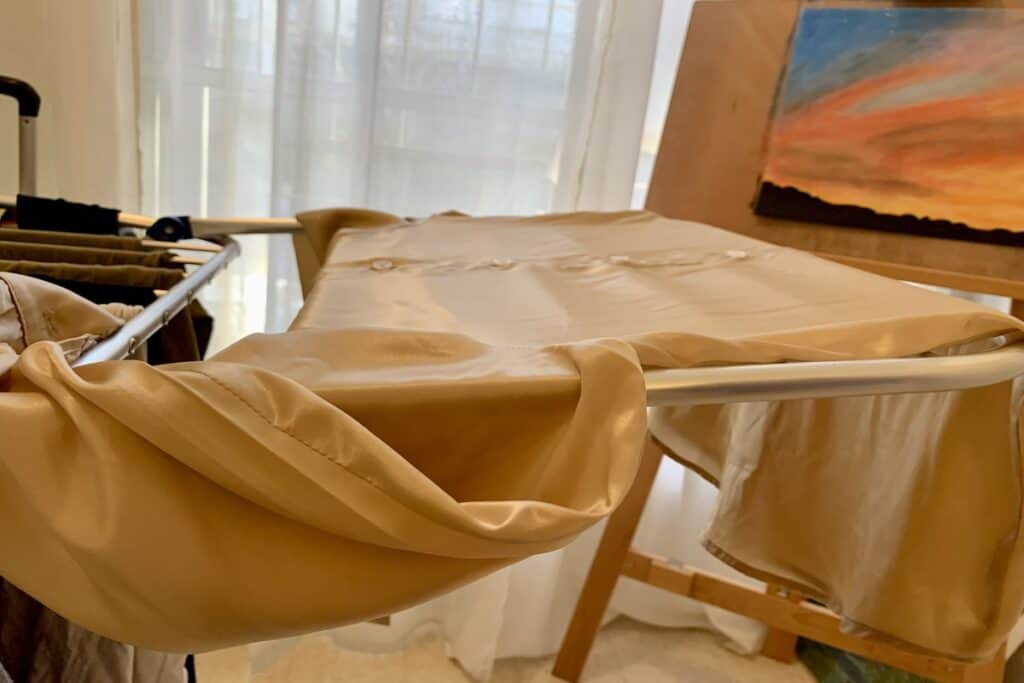
How Long Does It Take Silk to Dry?
- Air drying: 12-24 hrs
- In shade: 4-8 hours
- Dryer, no heat: 1-3 hours
Silk takes much longer to dry than cottons or synthetics. When in doubt if it’s fully dried, wait longer. Rushing leads to shortcuts that harm silk!
Can You Use a Dryer for Silk?
I don’t recommend machine drying silk often since the tumbling and heat slowly damage it over time.
However, in certain circumstances, dryer drying can be OK if you:
- Use the cool air fluff setting
- Place silk in a mesh bag first
- Remove immediately when dry
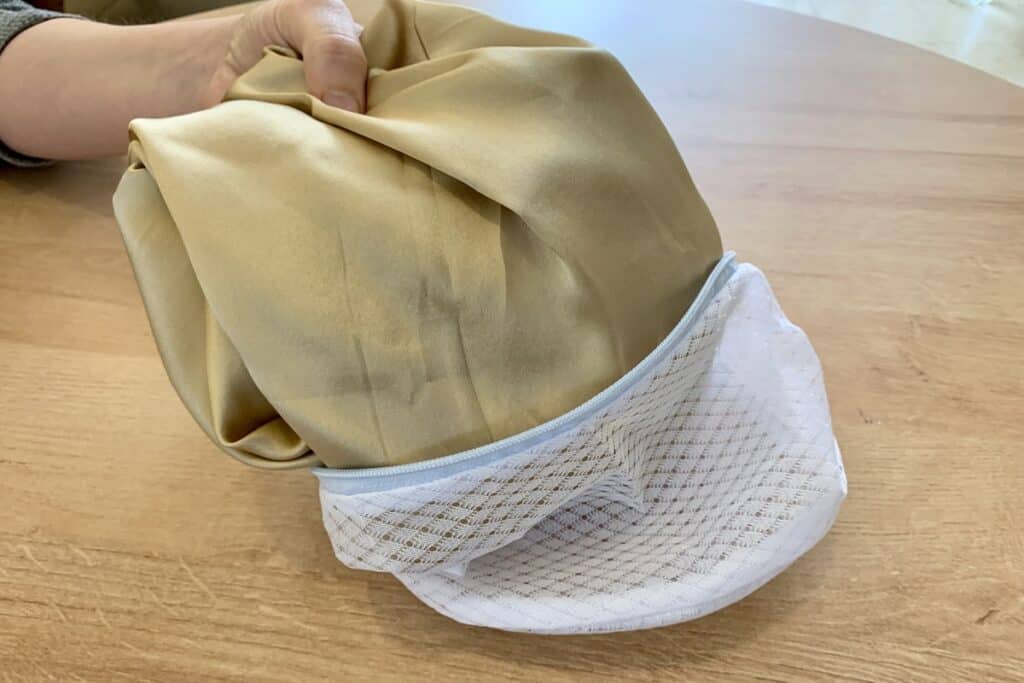
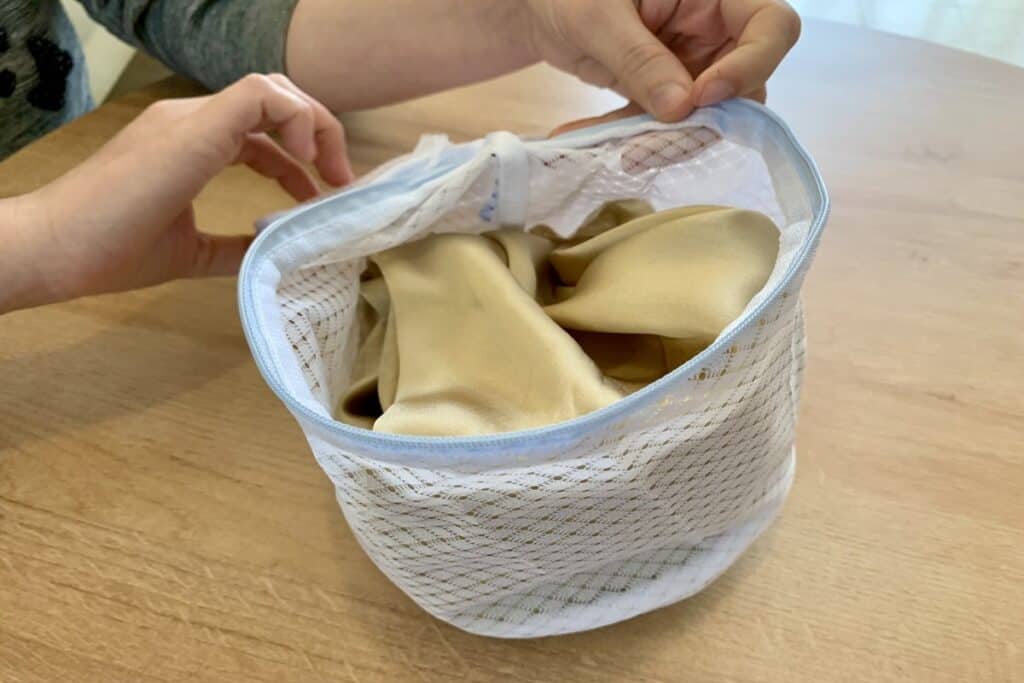
The mesh bag helps minimize friction and heat exposure compared to drying directly inside the dryer drum.
For best results though, skip the dryer completely and opt for air drying flat on towels whenever possible.
Troubleshooting: Fixing Silk After Drying
Even if you follow the best practices, silk can still end up with some minor issues now and then depending on the fabric quality and drying conditions.
Don’t panic! Many common silk drying mishaps can be remedied with a little TLC.
Dealing with Minor Shrinkage
If your silk scarf, top, or dress ends up slightly smaller after air drying, the fibers likely tighten up too much. To relax the threads and reshape the fabric:
- Fill a spray bottle with cool water and lightly mist the silk item
- Lay it flat on top of a dry towel
- Hover an iron set to low over the silk, letting the steam penetrate the fibers
- Gently stretch and smooth any creased spots to return the garment to its original size
- Allow to fully dry before wearing or storing
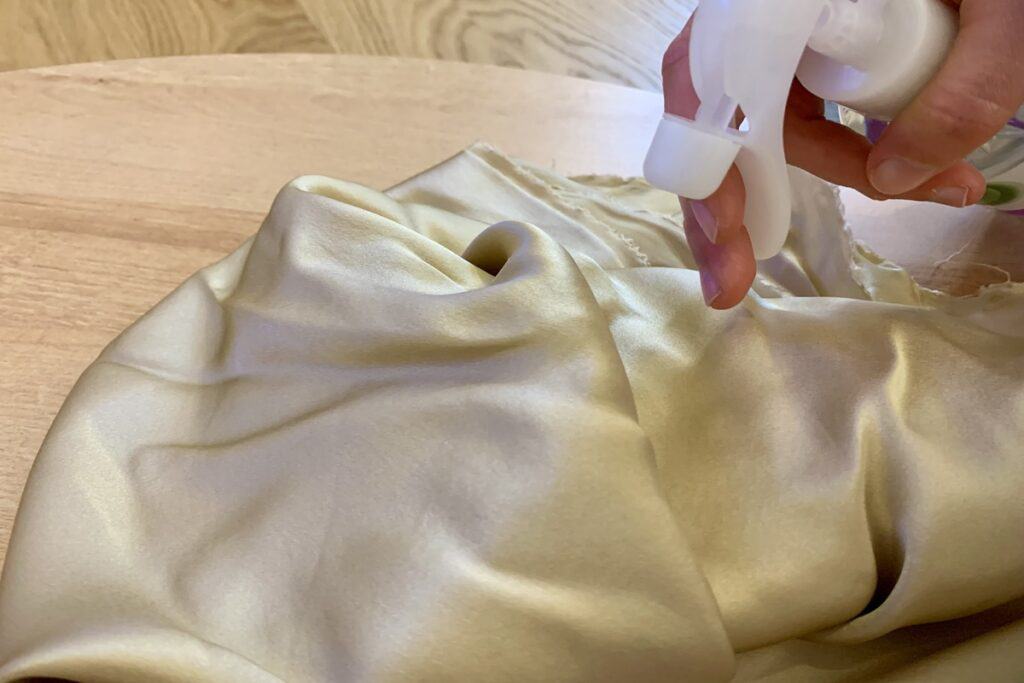
The moisture helps loosen up the threads while the heat briefly softens them to reform the shape. Take care not to actually press down on the silk with the iron.
Restoring Lost Sheen
Silk’s luminous sheen comes from the neat, orderly alignment of fibers that reflect light beautifully. If drying caused this structure to break down through friction leading to dullness:
- Carefully steam the silk on the inside of the garment
- While still warm and damp, iron extremely gently on low heat
- Or, apply a high-quality silk shine restoration spray formulated with mild cleansers and natural oils that replenish shine
- For heirloom items, professional restoration services can also polish old, lackluster silk
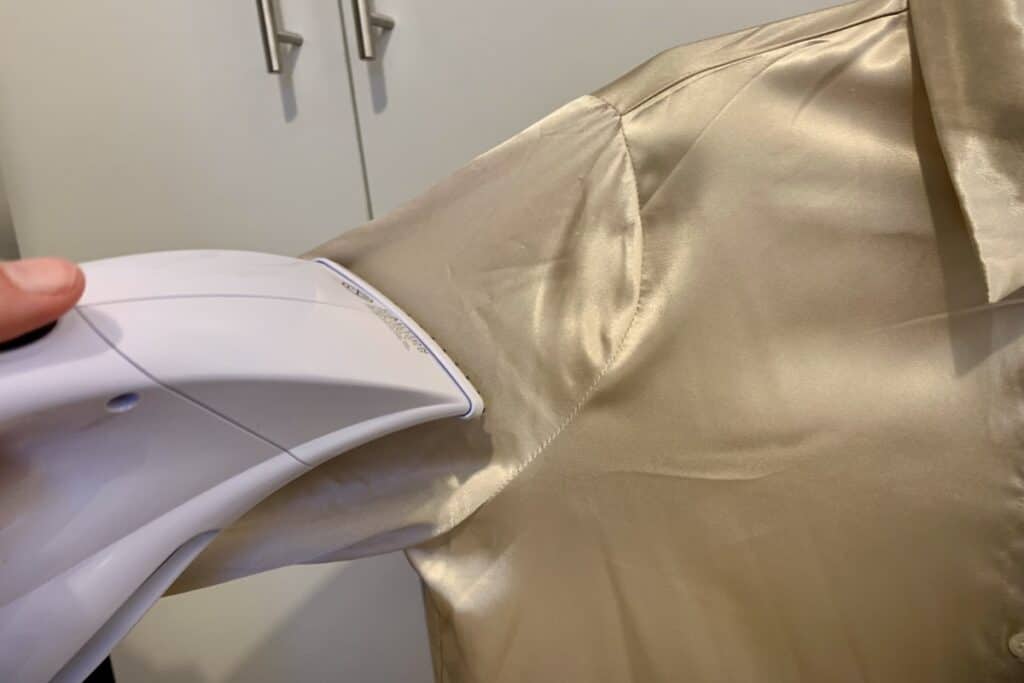
With a little TLC, you can often regain that covetable silk glow. Avoid over-handling and heat during future drying sessions.
Smoothing Out Wrinkles
If excessive wrinkling occurs during drying:
- Use an up-and-down steaming motion over problem areas, without pressing down
- Reshape seams and edges by hand
- Allow to dry fully
- Finish by lightly steaming surface wrinkles
The key is to coax fibers back into place instead of overly manipulating the fabric. Stop once shape and smoothness are restored to prevent over-stressing fibers.
Retouching Color Loss
If dyes appear faded post-drying:
- Order a specialty silk dye in a hue that matches the original color
- Carefully apply to the affected spots or areas following the product instructions
- Set the color by steaming briefly
With the right dyes and careful technique, you can refresh the look of silk. An alterationist can help match colors and fill in any dye inconsistencies.
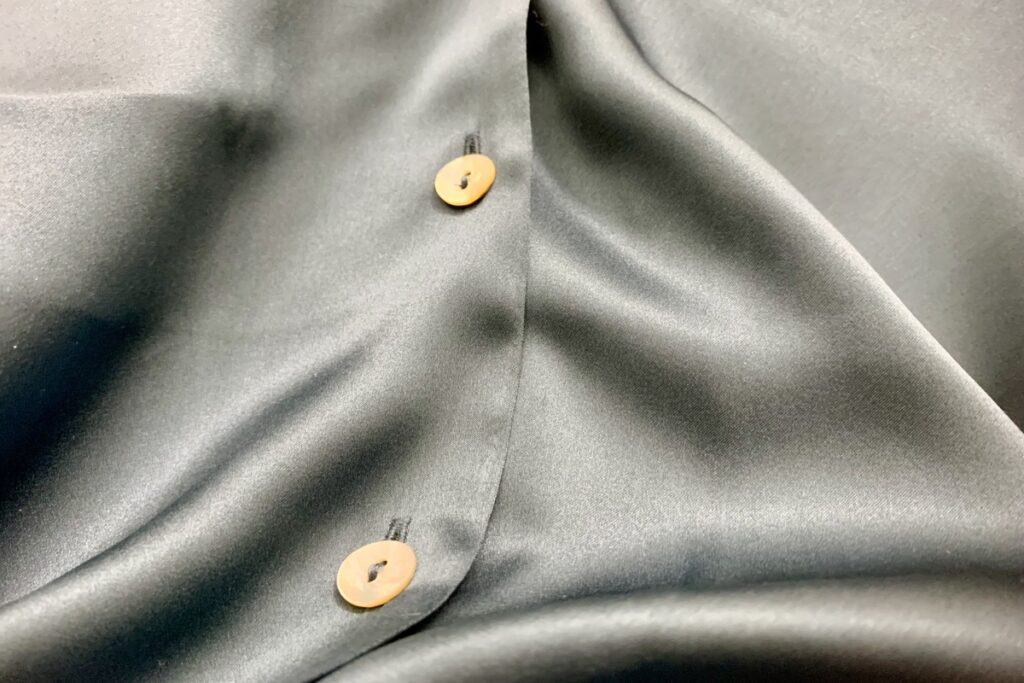
The Takeaway? Most common silk drying issues can be fixed with gentle heat steaming, ironing, stretching, and professional cleaning.
Handle delicately and always air dry from now on to prevent future damage!
Does the Quality of Silk Impact How Well It Handles Drying?
Yes, less expensive silk made with shorter fibers can pill, wrinkle, and tear more easily during drying than high-quality mulberry silk which has longer threads.
Quality silk also tends to maintain shine and drape better after repeated drying. Take extra care with lower-grade silk.
How Do You Dry Silk Embroidered Items or Silk with Trim?
Take extra care when drying delicate silk garments or fabrics featuring embellishments.
The added weight of beading, embroidery, or other accents makes the fabric more prone to stretching and distortion.
Reinforce stretch-prone areas with a wash-away stabilizer prior to drying. Use additional towels for cushioning on hard surfaces.
Even lightweight trim can imprint creases or tracks during drying, so allow ample time for moisture to fully evaporate while periodically reshaping.
Handle gently and smooth out edges by hand rather than hanging or machine drying when possible.
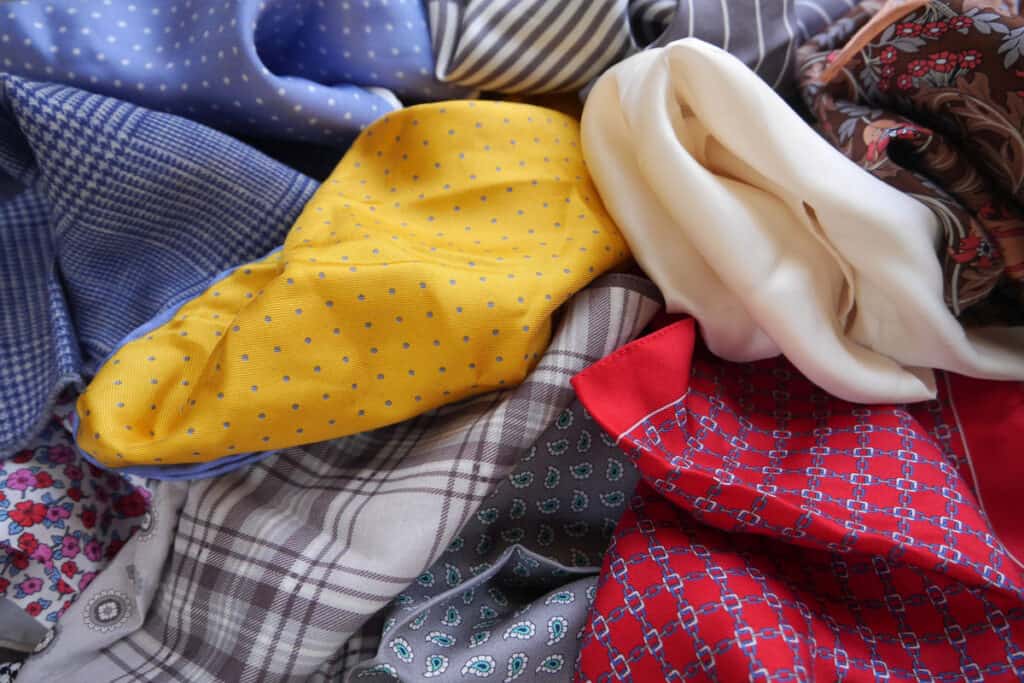
Key Takeaways: Caring For Silk During Drying
To keep silk looking its absolute best for years to come:
- Always air dry silk flat instead of using machines
- Prevent exposure to direct sunlight or excess heat
- Avoid leaving silk hanging vertically from hangers or clips
- Use very low heat on the iron’s silk setting if needed
- Dry clean regularly to clean oils and particles
Drying is when silk is most vulnerable to damage, so handling it with care makes all the difference. Follow these guidelines and your silk will retain its gorgeous sheen and supple drape for ages!
I hope these silk drying tips help you care for your elegant garments or fabrics. Let me know if you have any other questions in the comments!
